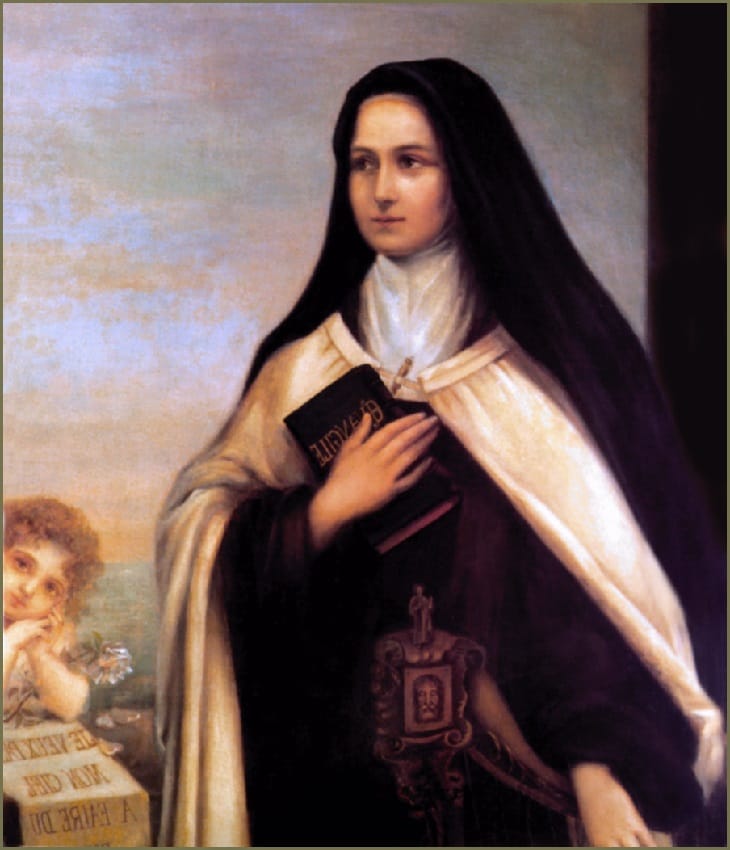
Essay on Therese of Lisieux
In this paper I’m going to discuss the life of Therese of Lisieux. It is necessary not only to explore her personality, but it is also necessary to reflect my own opinion about the accomplishments and achievements of her life.
I want to begin my essay with the statement that was made by Therese of Lisieux (born Therese Martin) one day: “I cherish the hope that one day Thou wilt swoop down upon me and carry me up until I am lost, a willing victim, in the fiery heart of the furnace of Love.” (St. Therese, the Little Flower). These words allow us to understand that the young heart of Therese was full of love to Jesus Christ, and even dying in 24 years old she was thinking about holy things.
St. Therese of Lisieux was born on January 2, 1873 in France in the family of watchmaker Louis Martin. The family was very religious, and Therese and her sisters have absorbed the sincere faith of their parents from the early childhood (Reichardt, 2001). Therese’s mother died when she was four, and in five years later her elder sister, Pauline, who replaced Therese’s mother, went to the Carmelite convent, but after a few months, Therese was seriously ill. No one was hoping that she will recover, but Therese believed that God would save her, and always prayed before the image of the Virgin Mary (Frohlich, 2000). Thus, Therese Martin decided to devote her life to serving God, after her unexpected healing.
Therese was called a “little flower”, but she had a steel will. In 1889, aged 15 years, Therese has taken the first attempt to enter the convent, but the abbess refused to give her consent referring to girl’s young age. However, the girl went to the bishop, then when the bishop also said no, she decided to turn higher: soon the bishop, making sure that Therese’s desire is not a minute whim, changed his mind, and Therese was able to realize her dream.
Theresa died at age 24, and she has lived in seclusion about 10 years in a Carmelite convent (Dreyer, 2003). She has never been involved in missionary activity, did not created a religious order, and did not commit great deeds, but despite this, in 28 years after her death, interest to her personality has grown so much that Therese was canonized in response to the insistent demands of believers. Why it was so? Let us explore this issue with more details.
Discussing Therese’s accomplishments and achievements it is necessary to mention that she was constantly thinking about the way how a person can achieve holiness in own life. She did not want to be just a good one, but she wanted to be a saint. She thought that there must be a way for people who have lived their small, inconspicuous life, such as the one she had. She was looking for any opportunity to get to heaven, finding her own path, albeit a very short and straight, but totally new. The main concept in the thinking of St. Therese was a “small way” – she called in such words the way to achieve holiness, not involving the commission of the heroic acts or deeds in the name of faith.
In my opinion, observing the life of St. Therese of Lisieux, it is possible to say that she thought about her mission, and she felt both a calling of the priest and apostle in her heart. Martyrdom was the dream of her youth, and that dream has grown with her. True love to her neighbor gave Therese’s a key to her saint mission and she also understood that the Church has a heart, and this heart burns with love to people.
Thus, basing on the discussed above it is possible to say that Therese in her young age was not an ordinary girl, but she was an example of holy life, because everything that surrounded a small Therese in the convent became a kind of means to increase the divine love in her heart. All trifles and the hardships of everyday life became a sacrifice of love in Therese’s mind. And everything Therese has dreamed about became a true after her death, because exactly this young girl became the apostle of love of XX th century, the missionary and the teacher of the Church. The people called her the Little Saint or the Little Flower. The church has seen in her life and actions the word of God addressed to our time. In 1925, Therese of Lisieux was officially canonized, becoming “the most loved girl on the earth.”
In conclusion, many generations of Catholics admired this young saint, called the Little Flower, and her short life has inspired people far more than the volumes of different holy books written by theologians. Thus, Therese of Lisieux – is one of the saint- protectress of missionaries, but not because she ever engaged in missionary activities, but due to her special love to the missionary movement, as well as prayers and letters, which Therese has supported to different missions. Her life – is a good reminder to all of us who feel that nothing can be done in one or other situation that exactly “small” deeds help to build the kingdom of God.

